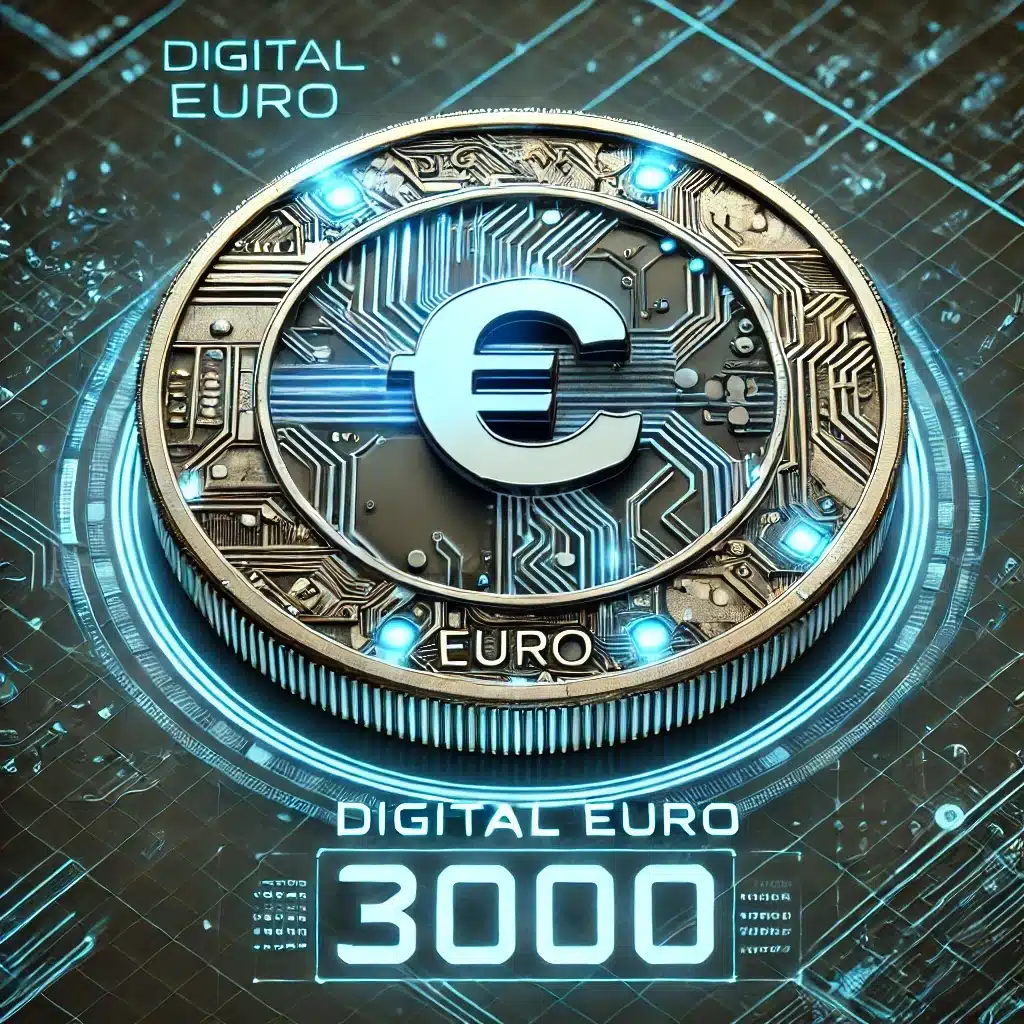EU Afraid of USD Stablecoins Taking Over the European Market

EU is Afraid of USD Stablecoins Taking Over the EU Market
The European Union (EU) is grappling with a potential financial upheaval posed by the increasing dominance of USD stablecoins so Politico reports. As these digital assets gain traction, EU policymakers are growing concerned about their impact on the euro and the broader European financial system.
The EU is therefor taken strategic steps to counteract the influence of USD stablecoins.
But let us first check how the whole stablecoin market looks like.
Market Dominance of USD Stablecoins
Stablecoins are a type of cryptocurrency designed to maintain a stable value by pegging them to a reserve of assets, often fiat currencies like the US dollar or the euro. These digital assets facilitate seamless transitions between cryptocurrencies and traditional currencies, and are supposed to offer stability in an otherwise volatile market
USD-backed stablecoins, such as the highly controversial Tether (USDT) and USD Coin (USDC), dominate the global cryptocurrency market. We say ‘controversial’ because Tether is since several years rumoured not to be 1 to 1 pegged to the US dollar .
According to data from crypto intelligence firm Kaiko, USD-backed stablecoins represent a staggering 90% of global crypto trades, whereas euro-pegged stablecoins account for a mere 1.1%. This vast disparity again shows the dominance of USD stablecoins and the challenges euro stablecoins face in gaining market traction.
The widespread use of USD stablecoins in Europe could potentially undermine the euro’s role as the region’s primary currency, and that is the main reason with the EU is very crypto-sceptical..
The most prominent stablecoins and their market shares, based on recent data, are as follows.
- Tether (USDT)
- Market Cap: Approximately $83 billion
- Market Share: Dominates with a large portion of the market due to its widespread adoption and liquidity.
- USD Coin (USDC)
- Market Cap: Around $27 billion
- Market Share: The second-largest stablecoin, widely used in DeFi and for institutional transactions.
- Binance USD (BUSD)
- Market Cap: Roughly $3 billion
- Market Share: Popular on the Binance exchange, used for trading and transactions within the Binance ecosystem.
- Dai (DAI)
- Market Cap: About $4.5 billion
- Market Share: A decentralized stablecoin that is widely used in decentralized finance (DeFi) applications.
- TrueUSD (TUSD)
- Market Cap: Approximately $3 billion
- Market Share: Another USD-pegged stablecoin, known for its transparency and regular attestations.
- Pax Dollar (USDP)
- Market Cap: Around $0.8 billion
- Market Share: Used for transactions and trading, ensuring regulatory compliance.
- Gemini Dollar (GUSD)
- Market Cap: Close to $0.3 billion
- Market Share: A regulated stablecoin issued by the Gemini exchange, known for its transparency and regulatory compliance.
The numbers show that USD-pegged stablecoins lead in the market.
Again, note that the absolute market leader Tether has faced a lot of scrutiny and controversy over the years. The primary concern revolves around – and we mentioned it earlier – its claims that each USDT token is backed 1:1 by USD reserves. Investigations revealed that Tether had been less than transparent about its reserves, and at times, its tokens were not fully backed by USD as claimed. Additionally, Tether settled with the New York Attorney General in 2021, agreeing to pay an $18.5 million fine without admitting any wrongdoing, but the settlement required Tether to provide greater transparency about its reserves.
Which reminds us that if Tether falls, the whole market might plummet. Hence why it’s a smart move to keep your crypto away from exchanges and on a cold wallet instead.
Implications for the EU Market
The dominance of USD stablecoins, particularly USDT and USDC, poses a challenge for euro-backed stablecoins and the EU’s monetary sovereignty. The vast market share held by USD stablecoins means that a large volume of transactions in the cryptocurrency market is conducted in USD, which could undermine the euro’s influence in the digital economy.
The EU responded with three actions:
- Markets in Crypto Assets (MiCA) Regulation: The MiCA regulation aims to provide a comprehensive legal framework for cryptocurrencies in the EU, ensuring transparency, consumer protection, and market integrity.
- Development of a Digital Euro: The European Central Bank (ECB) is exploring the development of a digital euro to offer a secure and efficient alternative to private stablecoins, ensuring that the euro remains relevant in the digital economy.
- Anti-Money Laundering (AML) Measures: The EU has introduced stringent AML regulations to prevent the misuse of cryptocurrencies for illegal activities, requiring thorough customer due diligence and reporting of suspicious activities
The EU is particularly wary of the potential impact of USD stablecoins on financial stability and monetary policy. Cryptocurrencies, especially stablecoins, pose a challenge to traditional financial systems by enabling transactions that bypass established financial controls and regulations. The widespread adoption of USD stablecoins in Europe could lead to “currency substitution,” where the euro is overshadowed by dollar-backed stablecoins, weakening the EU’s ability to conduct effective monetary policy.
Strategic Concerns & Initiatives
Financial Weaponization
Beyond regulatory and financial stability issues, stablecoins are also seen as financial instruments that extend the influence of the USD beyond the traditional banking system. This strategic aspect further again displays the EU’s unease regarding the proliferation of USD stablecoins within its financial ecosystem.
Stablecoins have been described as a “financial weapon” for the US, enabling the easy transfer of dollars to regions where they wouldn’t normally reach, potentially diminishing the euro’s influence.
Digital Euro Initiative
In response to the growing influence of USD stablecoins, the European Central Bank (ECB) has been exploring the development of a digital euro.
This way the ECB wants to to provide a digital alternative to private stablecoins, ensuring that the euro remains relevant in the digital economy. The digital euro is envisioned as a secure, efficient, and accessible means of payment that could counteract the dominance of USD stablecoins and bolster the EU’s financial sovereignty.
Users will have the option to link their digital euro wallets with commercial bank accounts, enabling seamless payments without pre-loading funds. The ECB is now working on a methodology to define these holding limits through comprehensive monetary and economic assessments.
However, the digital euro will not be remunerated and will be subject to holding limits. Current proposals suggest a holding limit of… around €3,000 per person. And unlike what many people initially thought, the digital euro aims to complement cash, not replace it.
While increasing the digital euro holding limit might seem beneficial in scenarios like a weakening US dollar, the ECB aims to maintain a balance between usability and financial stability. Still according to the ECB, a higher limit could lead to large-scale shifts from traditional banks to digital euros, potentially destabilizing the banking sector. The €3,000 cap is therefor designed to prevent such risks.
Having said this, adjustments to this limit could be considered in response to evolving economic conditions and financial stability assessments.
Here’s what the ECB promotes regarding the digital euro.
A digital euro would offer a cash-like option for the digital world of payments, alongside cash and private payments.
— European Central Bank (@ecb) February 5, 2024
Our colleague Maximilian shares how a digital euro could strengthen Europe in digital payments.
Find out more https://t.co/aDBqdsT34h pic.twitter.com/TkcBlaQRXR
Digital Euro Available by 2026?
The EU’s apprehension towards USD stablecoins stems from their potential to disrupt the financial system, undermine the euro, and facilitate financial crime. Through the implementation of MiCA and the development of a digital euro, the EU aims to mitigate these risks and ensure the stability and integrity of its financial ecosystem. The effectiveness of these measures will be crucial in determining the future of cryptocurrencies in Europe.
The idea of a digital euro has been on the table since at least 2020, but is still not rolled out. The European Central Bank (ECB) has indicated that the digital euro could be available by 2026.







